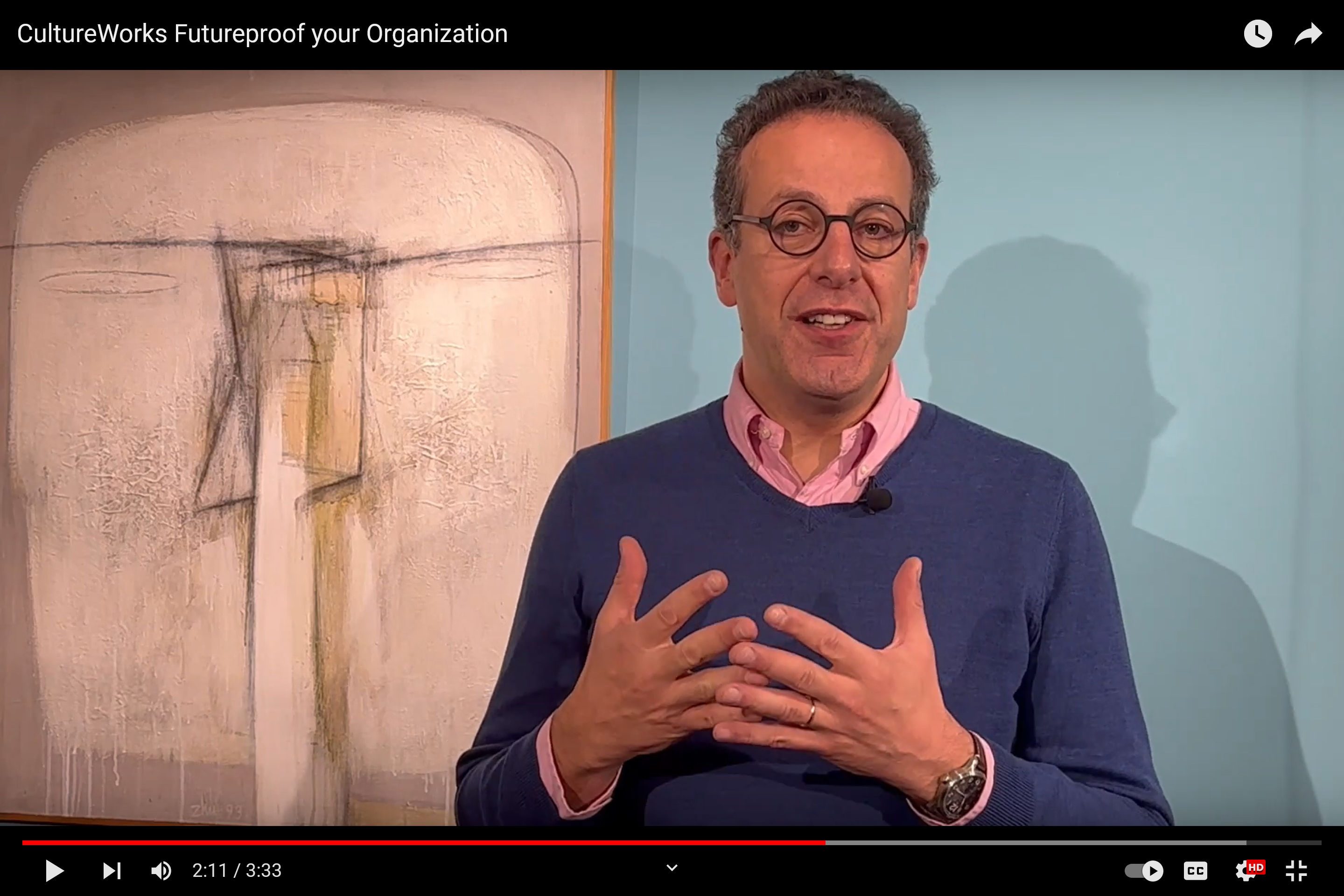The transformation towards a more participative organization is a typical adaptive challenge: it requires numerous changes across many, sometimes unknown boundaries, touching values and beliefs. This change can only happen through the people inside the organization and by experiment. There is no off-the-shelf recipe to make such a shift but there are some experiences with lessons learned. In this thought-letter, I share some takeaways based on facilitating such journeys, together with the Lifran team.
Two of the simpler complementary approaches to this complex transformation to self-governance are to take it top-down or bottom-up; we will start with the former and I will dedicate the next thought-letter to the reinforcing bottom-up approach. Obviously, the association of participative or self-managed organization might sound contradictory with top-down, because it is about empowering employees. But self-governance is based on trust in people’s talents; this translates into giving more freedom and responsibility to the employees and this can only be initiated from the top. With hindsight, we observe that most (if not all) successful transformations towards self-governance have been initiated by their CEO and top leadership. For example, at Semco (Brazil with 3.000 employees), Gore & Associates (USA with 10.000 employees), Favi (France with 600 staff) and HCL Technologies (India with 120.000 staff), their CEO initiated and inspired the shift to participative organizations centred on a freer expression of their employees’ talents. The key role of the CEO is also illustrated by the negative experience of Favi when Jean-François Zobrist, the “liberating CEO” retired. He told me that the company has now shifted back to a more hierarchical structure because the new CEO has other views.
Let’s review a few experiences that might be relevant to a CEO who is convinced of the necessity of a move towards self-governance but wonders “what are the first steps to generate buy-in of the leadership team, the middle managers and most employees for this change?”
First steps to build the readiness and conviction for change to a more participative model.
The CEO needs to create a burning platform to move the top leaders to question the current “predict, command and control” model, to accept to trust employees more and to share decision-making — a practical implication of self-governance.
Here are some effective initiatives to create a leader’s heartfelt need for change:
- Reinforce the readiness of a leadership team to cope with such a journey through strengthening their capacity to deal with uncertainty. This refers to the basics of a high performing team, which incarnates the culture of trust, where people face their vulnerabilities and can handle constructive conflicts (the two first levels of Patrick Lencioni’s model). If not yet present, the leadership should dedicate some time to grow as a team and give each other feedback (possibly deploy a 360° view).
- Dedicate quality time for conversations within the leadership team on the questions “what do we mean by participation/self-governance”, “what is the purpose1 of moving towards it?”, “what problem are we solving for our business?” and “what personal changes are needed to become more “servant leaders”?”.
These conversations require a safe space as they touch on the vulnerabilities of the system and its top leaders. Typically held offsite, these workshops are well prepared and structured in a way that leaves room for conversations on the real nature and responsibility of leadership and the narrative of the transformation towards a more participative model.
- Get outside-in inspiration, knowledge and experience on participative organizations.
This can be helped through hearing from leaders and the visits of companies which have been through such a journey of change. After each experience, the leadership team reflects together on their personal impressions and refines their collective intention and journey for their company (remember, there is no recipe). Inspiration can also come through simulation (serious gaming) of a self-managed team and by using simple decision-making techniques (e.g. decision by consent and conversation in circle).
- Maintain an open and safe transitional space to discuss the posture of a servant leader
“How does it feel to refrain from the command and control mode and to explore the coach and empower one?”, “How do the people around you react and how does that affect you?” are among the questions explored during open meetings every 3-4 weeks. Thereby, team members help one another to gain awareness and integrate the change of posture towards a participative posture (see previous thought-letter “do emotions eat strategy for breakfast?”). Some leaders complement this with personal coaching, which is a successful help in evolving.
- Explore what happens on the “shop floor”.
Leaders are helped by meeting workers, gaining a direct understanding of their aspirations and potential to run their working environment more autonomously. Observing employees finding solutions to problems also helps them give more trust and even understand the leaders’ powerlessness to “know better”. This happens with a lot of observation, listening and strict refraining from providing solutions.
Dare to trust and experiment autonomy.
We have seen that letting go (power and control) is a tough perspective for many leaders and makes them anxious. As a result, defense mechanisms arise, e.g. endless debating and planning, or other unconscious dynamics to stay in the comfort zone and postpone the decision and action.
This is totally understandable because giving trust is a risk, i.e. you will only know afterwards (the sooner the better) if it was the right choice. But here, there is a risk of getting cold feet because it takes a long time before the people who receive more autonomy and responsibility can deal well with them. They need to learn a new posture, to assume responsibility, acquire new skills and make mistakes.
The upside is that when employees feel trusted, they spontaneously give the best of themselves to succeed. Research proves this statement and we can all sense the deep satisfaction when we are trusted and when we have the perception that we can make our own choices.
To move forward, leaders need to experiment giving trust and granting autonomy to employees quite early in the transformation towards self-governance. I have experienced and observed some small and big initiatives with a significant positive impact. All started with conversations between leaders and followers. Here are some examples, ordered by growing degree of trust and delegated power to employees:
- Leaders consult the teams prior to taking a decision, with a view to enriching it. The more important the decision is, the more impact the consultation has. So, it can soon happen on strategic topics and priorities, on vision and purpose, and on a cultural question such as “how to grow service orientation”.
Depending on the size of the group and the complexity of the topic, it can happen in a simple set-up of a meeting (preferably in a circle), or techniques such as the fish bowl conversations (what is it?), or the more sophisticated world café (what is it?) and Open Space Technology (what is it?).
- Leaders co-decide with their teams. This is a higher level of delegation because employees take part in the solution on a more equal footing with their leaders. Shaping and distributing roles to succeed as a team or appointing someone for a certain role are interesting topics with which to start.
The decision-making process is key to drive a new type of conversation and a new balance of power and happens mostly by consent (what is it?).
- Leaders let go of controls and validation, first on a small scale and then on a larger one as trust grows.
Sometimes simplifying procedures from “necessary” controls and validations is the right thing to do. Employees feel more empowered and it also cuts some overload of administration with little added value. For example a bank has abolished formal IT project management tools, so that, rather than filling up forms and tables which are hardly ever followed up, they feel the impact of what they do. This kind of move creates people’s hope that things can really change for good.
In these experiments, the process should be managed in a fair way, so that people understand the rules of the game in advance and keep up their engagement (the perception of injustice creates dramatic resistance). For example, if leaders consult, it should be clear to all that the leaders will make the ultimate decision, the employees only influencing and receiving feedback on the decision.
These first experiments require professional facilitation to support the learning process. Soon, you might also want to train some enthusiastic employees and managers to facilitate collective intelligence and participative decision processes.
Avoid communicating on your intention to build a more participative organization, but rather on some concrete sub-initiatives and successes, otherwise all concerned will fantasize over what participative management really means. Also, the gap between the ambition and what people actually perceive and observe (incl. behaviours) is going to be pretty wide for quite a while and this can lead to perceived paradoxes, anxiety, confusion and irony. Acting (more than speaking) will give hope to employees that the journey will realistically make them gain in autonomy to express their talents to the benefit of the company. This will boost their implication and motivation to perform!
I hope that this thought-letter feeds you in your journey. I’d be happy to have your feedback and discuss your views on the topic. Feel free to share with others.
All my best,
Lionel
Inspiring reading on this topic
The HOW Report (by LRN) demonstrates the benefits of Self-Governing Organizations where employees are inspired by a desire for significance and encouraged to act as leaders regardless of role, produce better business outcomes (market share, business results and customer satisfaction) by all meaningful measures. It is based on data collected from 16,000 employees in 17 countries.
Link : https://howmetrics.lrn.com/
Download PDF





